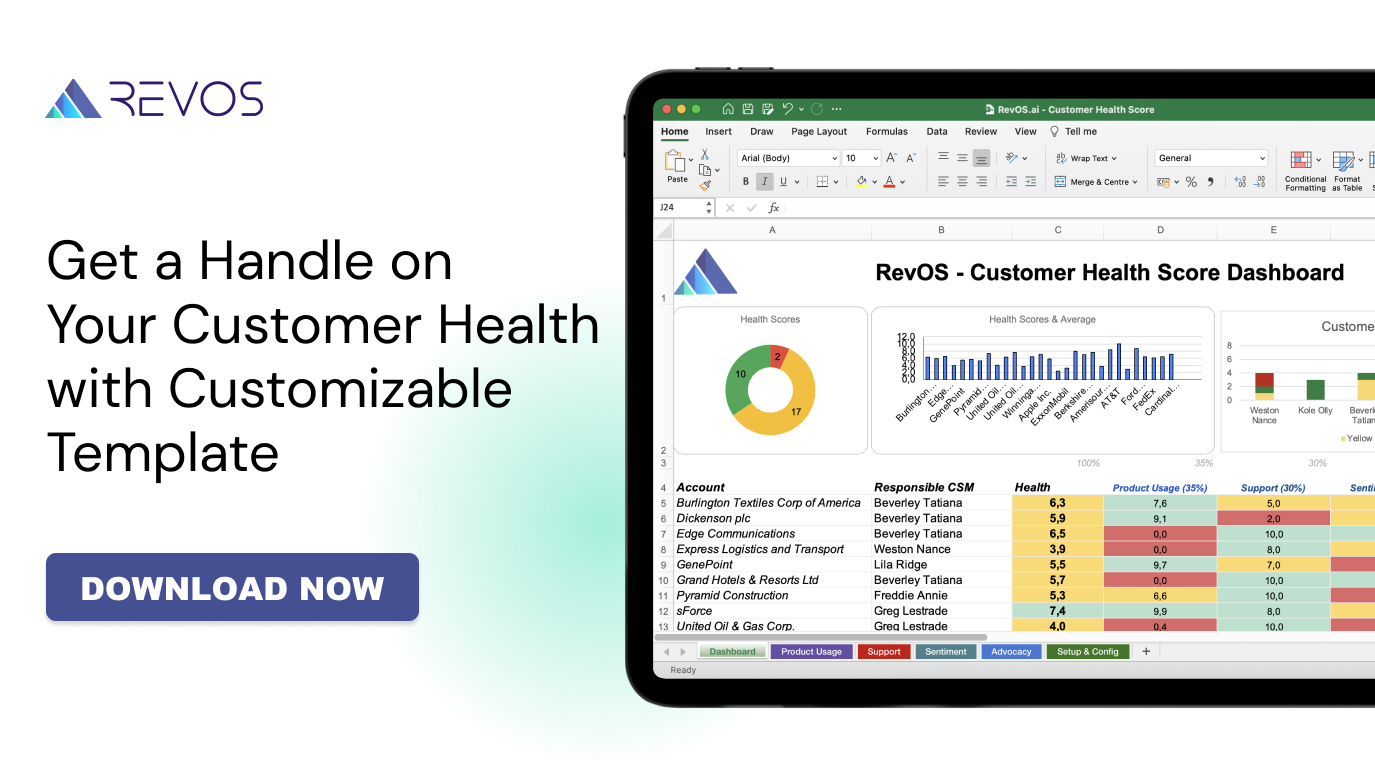The Power of Net Promoter Score in Building Strong Customer Relationships
 Renat Zubayrov
Renat ZubayrovThe Net Promoter Score (NPS) is one of the most important customer satisfaction metrics that measure the likelihood of a customer recommending a product or service to others. In the business world, it is crucial to understand customer loyalty and satisfaction to drive growth and improve customer relationships. The NPS provides valuable insight into a customer's perception of a brand, serving as a key element in a comprehensive customer health score.
This article, part of a series, will show the importance of the NPS in predicting customer churn and providing a customer retention role in helping businesses succeed. We will explore how the NPS can be leveraged to make informed decisions and enhance customer satisfaction.
The NPS developed by Fred Reichheld, a partner at Bain & Company, NPS is based on a single question: "On a scale of 0-10, how likely are you to recommend [Brand/Product] to a friend or colleague?"
Customers who respond with a score of 9 or 10 are considered "Promoters" of the brand, those who respond with a score of 7 or 8 are considered "Passives", and those who respond with a score of 0-6 are considered "Detractors". The NPS is calculated by subtracting the percentage of Detractors from the percentage of Promoters.
NPS is a widely used metric because it is simple to understand and easy to calculate. It provides a single number that can be used to track customer loyalty over time, and it is directly tied to revenue growth. According to Reichheld, companies with high NPS scores tend to grow at a faster rate than those with low scores.
One of the key benefits of NPS is that it allows companies to identify their most loyal customers. Promoters are more likely to be repeat customers, refer others to the company, and provide positive word-of-mouth advertising. By understanding which customers are most likely to recommend the brand, companies can focus their resources on providing exceptional service to those customers.
NPS also allows companies to identify areas where they may be falling short with their customers. Detractors are more likely to leave negative reviews, switch to a competitor, or provide negative word-of-mouth advertising. By understanding the reasons why customers are not likely to recommend the brand, companies can take steps to improve their products or services.
It's important to note that NPS should not be the only metric used to measure customer loyalty. It should be used in conjunction with other metrics such as customer satisfaction, retention, and revenue growth. Additionally, NPS should not be used as a standalone metric to make business decisions. It should be used in conjunction with other data such as customer demographics, purchase history, and feedback to understand the root causes behind the score.
To help figure it out with NPS and all KPIs for sales and customer success specialists we created the Customer Health Scoring Practical Course. In one package you'll get a ready-to-use Template for Google Sheets and Microsoft Excel with customizable formulas that capture every detail, case studies with the best practices, and a useful video tutorial on how to set up your own dashboards.
The course and template were built from deep-dive interviews with over 80 customer success professionals and over 200 comments and improvements, and for our readers, we have a special discount code - with a code LINKEDIN50 you’ll get a 50% off the regular price.

Benchmarks
The value of Net Promoter Score ranges from -100 to 100, with a score of 50 or above considered "good" and values above 80 are “excellent”. However, the specific value that is considered "good" can vary depending on the industry and company. Generally, a higher NPS is better, as it indicates that more customers are likely to recommend the company's products or services to others. For a scoring scenario, we would suggest the low value to be everything below 20 and high value above 80.
Challenges
Measuring and controlling the Net Promoter Score (NPS) for customer health scoring can be challenging for a few reasons:
- Consistency: NPS surveys are typically conducted at different times and through different channels, which can lead to inconsistent data and make it difficult to accurately measure customer satisfaction and loyalty over time.
- Response bias: NPS surveys rely on self-reported data, which can be influenced by response bias. Customers may be more likely to respond positively if they have had a good experience or negatively if they have had a bad experience.
- Limited data: NPS surveys typically only ask one question, which limits the amount of data that can be collected about customers. This can make it difficult to understand the underlying reasons for a customer's score.
- Lack of actionability: The NPS score alone may not provide enough information to take action to improve customer satisfaction. It is important to understand the underlying reasons behind the score.
- Limited customer base: NPS is calculated based on a sample of customers, which can be limited and may not accurately reflect the entire customer base, moreover resulting data can heavily be influenced by a misplaced or wrong targeting of NPS survey.
Alternatives
There are several alternative metrics that can be used to measure customer loyalty and satisfaction in place of the Net Promoter Score (NPS). Some of the most popular alternatives include:
- Customer Satisfaction (CSAT): This measures the overall level of satisfaction a customer has with a product or service. It is often measured using a scale of 1-5 or 1-10, with higher scores indicating higher levels of satisfaction.
- Customer Effort Score (CES): This measures the effort a customer has to exert to get their problem solved or question answered. It's often measured on a scale of 1-5 or 1-7.
- Customer Retention Rate (CRR): This measures the percentage of customers who continue to do business with a company over a given period of time. It is a useful metric for understanding how well a company is retaining its customer base.
- Repeat Purchase Rate (RPR): This measures the percentage of customers who make a repeat purchase within a given period of time. It is a useful metric for understanding how well a company is retaining its customer base. This metric is especially important for e-commerce / online retailers.
Ready to dive in?
Don't miss out on the opportunity to take your customer success strategy to the next level! Enroll in our Customer Health Score Course with Template and gain the knowledge and skills you need to track and analyze customer health scores effectively. With our comprehensive course material, practical insights, and easy-to-use template, you'll be able to drive customer retention and growth in no time. Only for our subscribers 50% off for the course with a coupon “LINKEDIN50”.
Don't wait, make the investment in your professional development today and see the results for yourself!
Read more about revenue operations, growth strategies, and metrics in our blog and follow us on LinkedIn, Youtube, and Facebook.
← Go back to blog